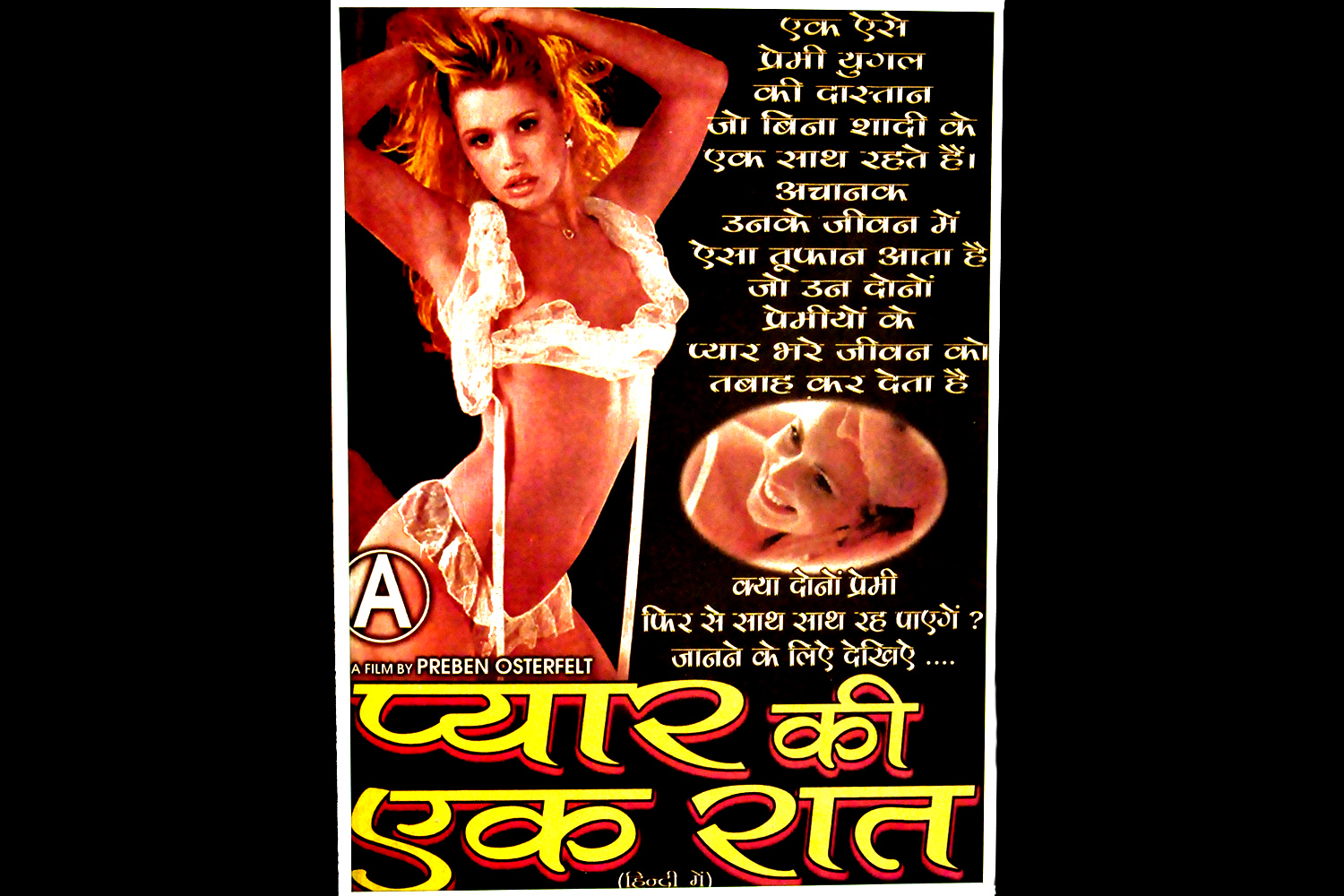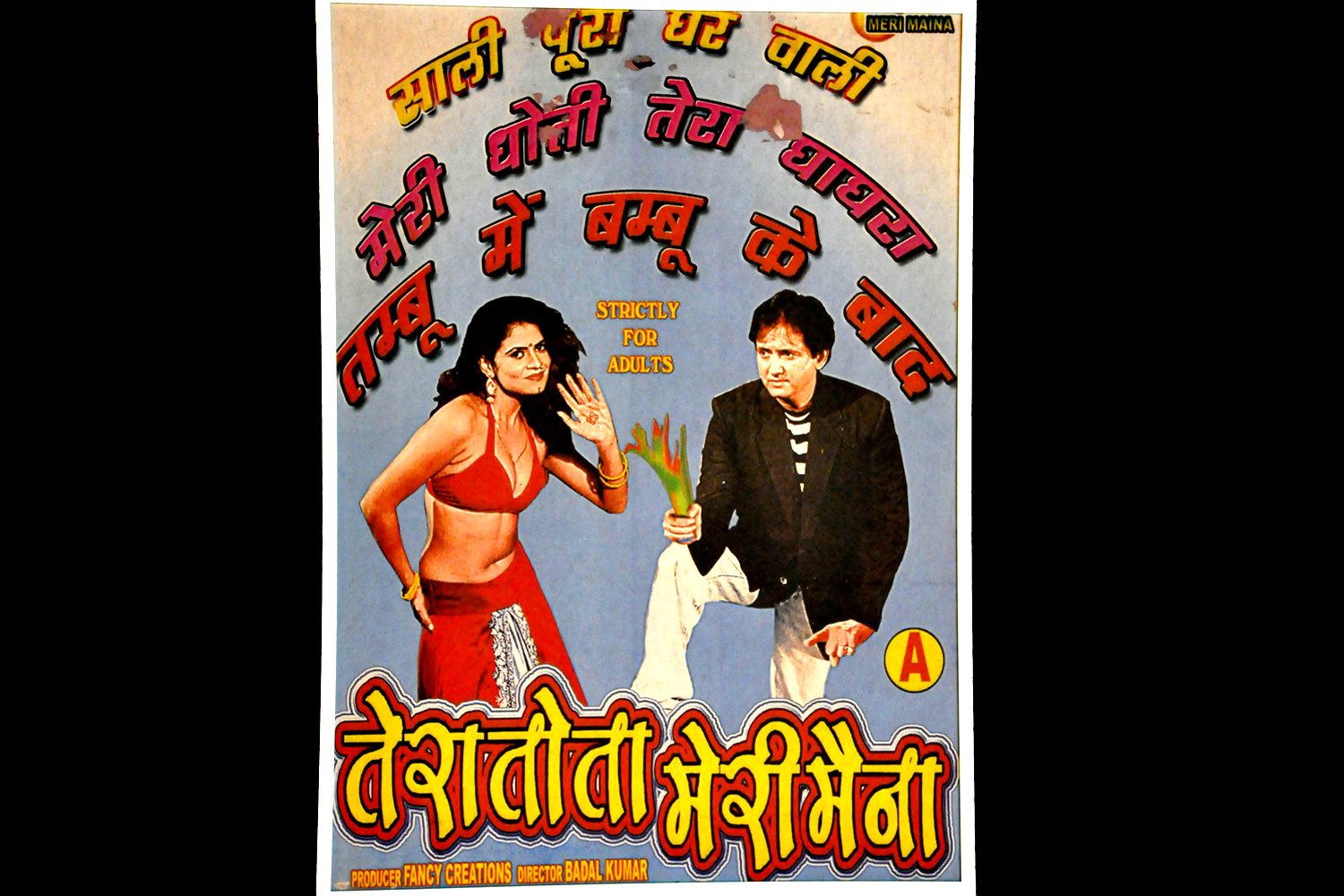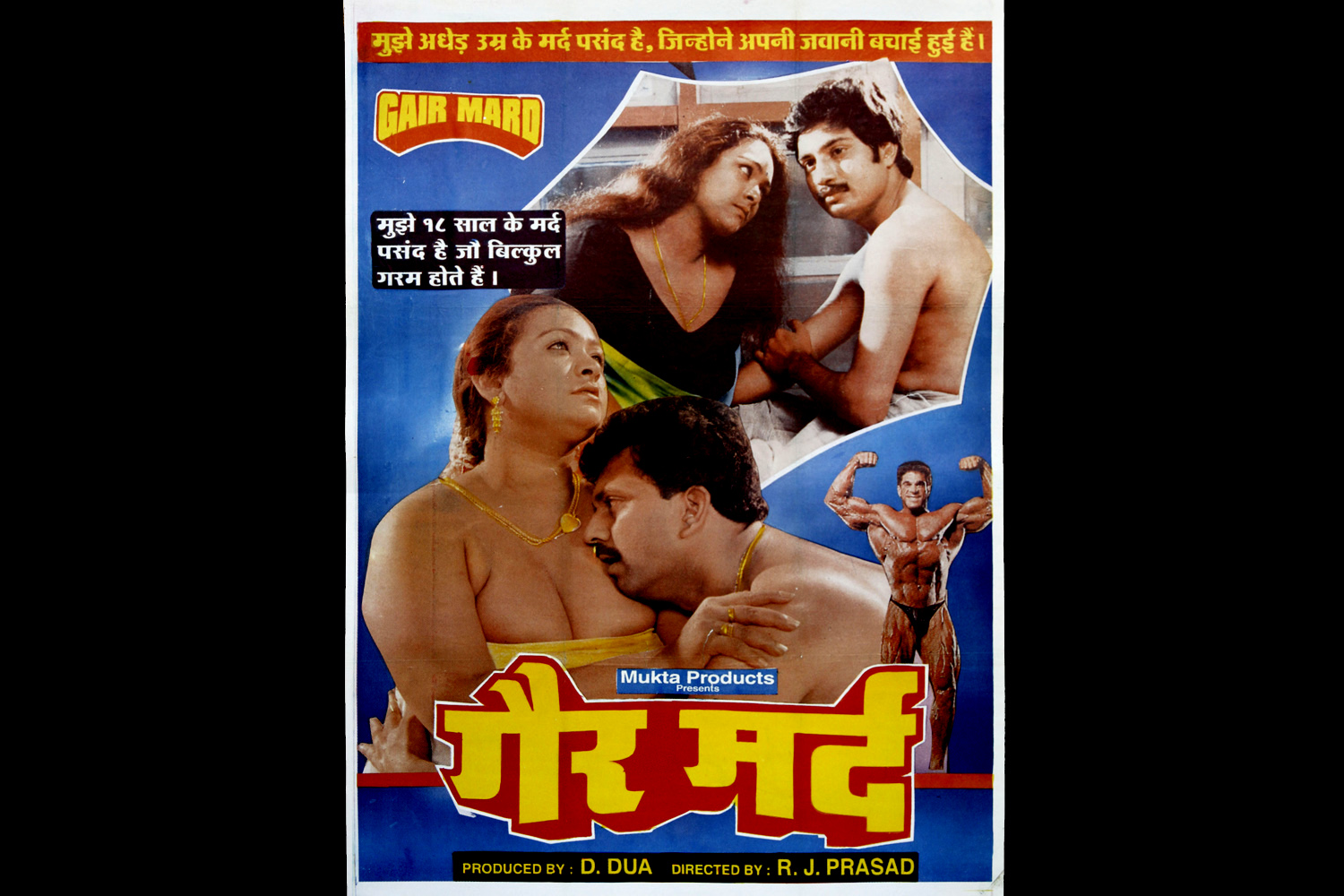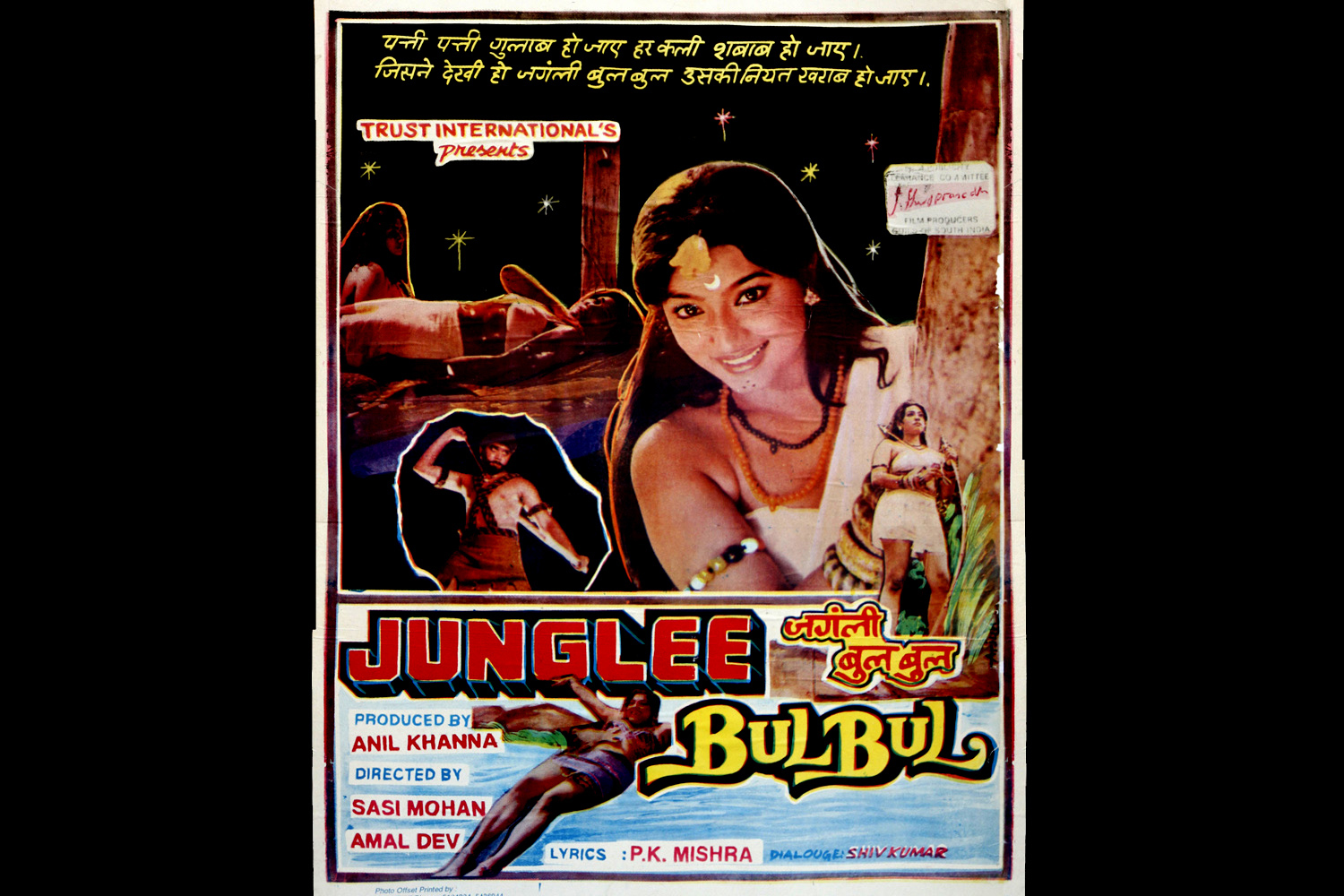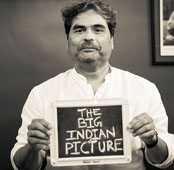-
 Poster of Pyar Ki Ek Raat (One Night Of Love)
Poster of Pyar Ki Ek Raat (One Night Of Love) -
 Poster of Qatil Jawani (Youth Kills)
Poster of Qatil Jawani (Youth Kills) -
 Poster of Sarfira Aashiq (Crazy Lover)
Poster of Sarfira Aashiq (Crazy Lover) -
 Poster of Biwi Anari Saali Khiladi (The Wife's a Vagrant, The Sister-in-Law's A Player)
Poster of Biwi Anari Saali Khiladi (The Wife's a Vagrant, The Sister-in-Law's A Player) -
 Poster of Doosra Pati (The Second Husband)
Poster of Doosra Pati (The Second Husband) -
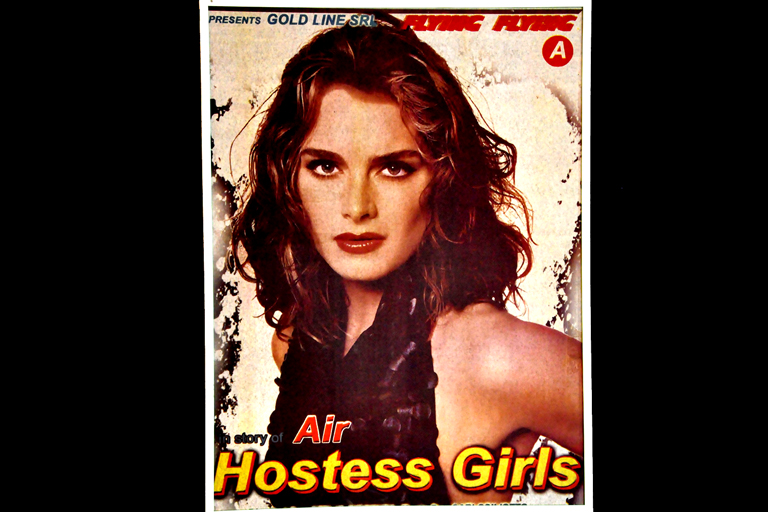 Poster of Air Hostess Girls
Poster of Air Hostess Girls -
 Poster of Tera Tota Meri Maina (Your Parrot, My Myna)
Poster of Tera Tota Meri Maina (Your Parrot, My Myna) -
 Poster of Kaam Tantra (The Way Of Lust)
Poster of Kaam Tantra (The Way Of Lust) -
 Poster of Reshma Ki Jawani (Reshma's Youth)
Poster of Reshma Ki Jawani (Reshma's Youth) -
 Poster of Her Nights
Poster of Her Nights -
 Poster of Miss Laila
Poster of Miss Laila -
 Poster of Aagey Maut Peechey Maut (Death Ahead Of You, Death Behind Of You)
Poster of Aagey Maut Peechey Maut (Death Ahead Of You, Death Behind Of You) -
 Poster of Gair Mard (The Other Man)
Poster of Gair Mard (The Other Man) -
 Poster of Prem Tapasya (The Penance Of Love)
Poster of Prem Tapasya (The Penance Of Love) -
 Poster of Junglee Bulbul (Wild Songbird)
Poster of Junglee Bulbul (Wild Songbird) -
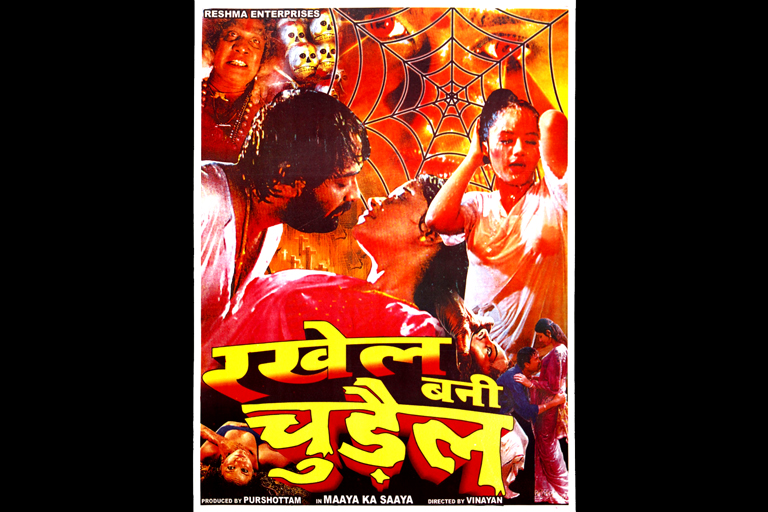 Poster of Rakhail Bani Chudail (The Mistress Became A Witch)
Poster of Rakhail Bani Chudail (The Mistress Became A Witch) -
 Poster of Savli Ladki (Dark Girl)
Poster of Savli Ladki (Dark Girl) -
 Poster of Honey I Love You
Poster of Honey I Love You
44 year old Sunil Vysyaprath, or V Sunil, one of the country’s most successful ad men, is a dedicated practitioner of the wry half-smile. The man who began his career as a finishing artist with an unknown ad firm in Bangalore went on to become Creative Director with advertising giant Ogilvy & Mather, before he quit to found ‘A’, an independent creative agency, which Sunil had said could stand for “art, architecture… all the creative things”.
Today Sunil is Executive Creative Director at the global advertising agency Weiden + Kennedy (W + K), which he merged ‘A’ with. His best known ad campaigns include ‘Incredible India’— where an exclamation mark replaced the ‘I’ that India begins with, and the more recent TV commercial for IndiGo Airlines— where air hostesses, ground crew and pilots dance to a modern parody of the Gilbert and Sullivan song I Am the Very Model of a Modern Major-General from the 1879 opera Pirates of Penzance. He has all the while kept tongue firmly in cheek. The half smile lingers.
In Motherland, a magazine published by W + K that examines “trends, issues & ideas that shape contemporary Indian culture”, and all the quirks imbued within it. In an art gallery called W + K Exp, which opened with the show Skinny Legs and All.
Also, in a collection of over 40 Indian adult movie posters, exhibited at the same gallery, under the title Morning Show. The posters, of movies with names like Kama Tantra (The Way of Lust), Junglee Bulbul (Wild Songbird) and Meri Dhoti, Tera Ghagra (My Dhoti, Your Ghagra), are the consequence of Sunil’s efforts of over a decade. In this interview he speaks of why they piqued his interest, and what he makes of them. He recounts his memories of morning shows of adult movies, in Kerala and Bangalore, and how they represent a subculture that seems to have passed us by. How documenting this subculture might provide us with some amusement, sure. But also perhaps a little insight into our journey as a society.
So you’ve exhibited about 30 of your adult movie posters?
Yeah, I think about 30 of them.
How many do you have in your collection?
More than 45.
Which era do they belong to?
Most of them are early 80s and maybe late 70s. If you look at them, all of them have a very definite look. The whole thing is handwritten and the pictures are cut/paste from magazines, disproportionately. I don’t think that these pictures are part of the movie. It’s a kind of strange art.
Now the last two-three years… I don’t know… what’s the look for, let’s say, Chak De? It’s difficult to remember because every poster looks like the other now— it is all assembly line.
In your poster collection, how many of them are from Hindi films, how many from regional cinema?
I think most of them are regional cinema and most of the Hindi ones are actually dubbed over regional films. A lot of the Hindi names are actually Malayalam films from Kerala. They change the name and all, like it becomes Her Nights from whatever it was called originally. And this movie, Her Nights, it’s not really… none of them are actually porn films. There are actually a couple of scenes of some woman bathing or, you know, just showing her legs, or something like that.
So it’s more like a marketing gimmick than…
Yes it’s like marketing to a certain kind of an audience, trying to show sex in a limited sort of way, but in those days that was a big deal— there was no internet so that was the only sex you’d see, because most people lived in a kind of a big family set up, very sheltered, and every house would have 10 people and most homes didn’t have television. Only place you could see some bit of a woman’s body was in movies. There again, only morning shows. Earlier it was just a little skin show through the clothes. Later it became a little more adventurous. For instance suddenly, in the middle of the movie, there’s a sudden cut and there’s some deadly crazy kind of nude scene. Like someone getting raped or something very graphic like that.
They just put it there without context?
Yeah, but it’s not even properly done. You could hear the director telling the actors: “Hey, look here… ” kind of thing. Very desperate measures for desperate people. Now of course things have changed but I think the morning show culture is still there in small towns. Sometimes if you drive out of Delhi or Bombay, you still see some posters like these.
Were you a fan of the morning show, back then as a youngster?
When I was in school, first of all, you could not go to see a movie. The first movie I saw was when we ran away from school and saw a Telugu movie. We didn’t even understand anything. By the time we were able to see I was actually working in Bangalore. There I would see the morning shows sometimes.
What did the audience comprise?
The morning show started around ten-ten thirty, and gets over by twelve thirty-one. If you saw the kind of people coming out of the theatres— there was a lot of what they call the ‘decent’ crowd. All kinds of people. College kids to old uncles. In Kerala especially everyone had a crisp white shirt on.
That is a fantastic scene…
Everyone walks out as if they’ve seen nothing. Because there, the society is a big thing, right? Society plays a huge role in exercising control over people, otherwise who really cares? That’s why when people see posters they don’t look because they worry about what their neighbour will think. So people were very shady about watching morning shows. But now it’s completely changed, now the morning shows are all children’s movies right?
Of course…
So now if you’ve gone to see ‘morning show’, that means you’ve gone with your child.
Also why that name Morning Show for your exhibition was so important.
That’s why we called it Morning show. If we had called it something else… if we had called it, let’s say, a “dirty movie poster show”, it would not have had that cultural kind of impact.
Was there a difference in the audience for morning shows in the cities and the audience in small towns?
I don’t think so. I think it’s the same. If you see Bombay even now, there are all these couples hanging around Juhu Beach or in Bandra on the boundary walls. Because you’re living as part of a large family you have no personal space. So if you have a girlfriend, or wife, you’re better off outside than inside the house. It is the same with movie watching. Even just to see a part of someone’s leg you have to wake up early morning and go on a Sunday to see a Morning show.
Very curious, were there women? You never see women in the morning shows?
Never.
Coming back to your poster collection, when and why did you start collecting these posters?
See, I’m not like a desperate porn-poster collector, but I like collecting all kinds of things. Ten years ago we started a company, called ‘A’, like in the symbol for Anarchy. So we thought it would be a good idea to find these kind of posters because they also said ‘A’ (for adult) on them. So I called a friend of mine who was a producer in Bombay and she actually sent me a packet of some 40 posters. That got me started. Thereafter I’ve collected from here and there— it could be some carpenter from Pondicherry or it could be some gallery in New York. But I was lucky to find some 40-50 of these posters in one go. I got some big ones which were joined into eight, massive posters. One reason why I’m not selling them is because we don’t even know who the artists are, who made it. If I sell it I don’t even know who I should give the money to.
These posters have been by and large ignored in the genre of poster art, why do you think this is so?
It is only in the last 10-15 years that there has been a lot of discussion on Indian poster art and street art. The whole kitsch thing, so to speak. But even though this kind of style of art was talked about, it wasn’t really being discussed in the right way. When the art market boomed this kind of art sold a lot. But if you really look at the amount of places where it’s documented properly, there’d be very few. Mostly what happened was that the India story became big and suddenly there was ‘Indian’ art everywhere, you know— the taxis in London dressed up in an Indian kitsch sort of way. The poster becomes a part of the overall street art collage. Very few people were seeing it as a separate form and breaking it down into regions etc., let alone looking at the sub-genre of adult movie poster art.
Is it that they’re adult posters or that, on the surface, there’s some crassness to them… do you think that that could have prevented them from being looked at, or that is part of the reason that they’re swept under the carpet ?
I am not sure. Maybe it’s not so huge in terms of its cultural relevance. I can’t say. According to me the bigger problem is we’re not able to document anything. If you look at history, there’s no proper documentation. Look at our independence story. If you look for pictures, it’s a struggle. We’ve been terrible at documenting, especially about our culture. In the recent years, after the advent of internet, things have begun to change. Otherwise culture is like something that has been left to a Lalit Kala (Akademi) in a Cultural Ministry.
So those places of expertise are in a way lacking…
So those guys… when they do it, it’s not done very smartly. Young people don’t want to use it. It is not accessible enough, nor rightly packaged.
Is there any particular contribution that this genre of adult movie poster art could have made either to poster art or art itself?
Yeah I think so. Well it’s difficult to say but, like a lot of things, digitisation has killed originality. Earlier even if you were a lazy artist, who had no idea, you still had to draw and paint and cut and paste to make something happen. Now you can actually just go online and get it done. So if you look at not just this but street art on the whole, there’s vinyl all over the place. Earlier, let’s say you went to a small town in the South, the culture of this place was represented in the lettering on the walls, the paintings, and all that. Because the local artist did it all.
Even the houses…
Everything. Now when you go, whether you go North or South, everything looks the same— covered with ads of Airtel, Vodafone and such. Local artists have no job anymore. Someone will come take some pictures, they’ll scan it, and it’s all done.
What could be some key elements of this sub-genre?
One, that you can tell the distinct style of the artist who writes the names. Then the naming of the films themselves, these guys came up with crazy… And then there is one line, right under that, explaining the movie. You know like: “How can a girl rape a boy?” Some random thing like that.
Then there is the disproportionate cutting and pasting of pictures. There are some Khajuraho sculpture pictures there, then a picture of someone’s breast from one magazine and someone’s else’s face pasted there— perhaps from a fashion magazine. If you look at the pictures they are all from 80’s magazines. Probably some innocent women’s magazine. So that style is kind of crude, but there is a look, a strange aesthetic.
Are the poster pictures in India less graphic compared to adult movie posters abroad?
Yeah, there is a design element in international adult posters— if you see all the Red Shoe (Diaries) series, all of them beautifully designed. Here they are not made by great designers. This extends to a lot of other traditional street art too. You’re not really trained in a design school. You’re an artist, you have a craft but you are not a great designer, they don’t have great aesthetics. It’s like a hairstylist who can cut your hair but they can’t style it, you know what I’m saying?
Not have a vision.
Not have a vision. So I think that is the difference between the posters those days, from abroad and from here. Those were perfectly designed by a studio or a designer or someone like that. Here it is done by some local artist with a great hand.
What I was asking was were posters here more modest than the posters…
Yeah of course, our country’s like that. We can’t openly show anything.
Have you ever thought about finding out more about the films themselves?
In fact we were actually thinking of this when we were doing the show, we were trying to get in touch with a lot of people. We wanted to do interviews with people who had done the type, or the directors of the films, but it is very hard to find any of these people. We could not even trace the printers.
Dirty Pictures
InterviewDecember 2012
 By Rishi Majumder
By Rishi Majumder
Rishi Majumder is Senior Editor at The Big Indian Picture



